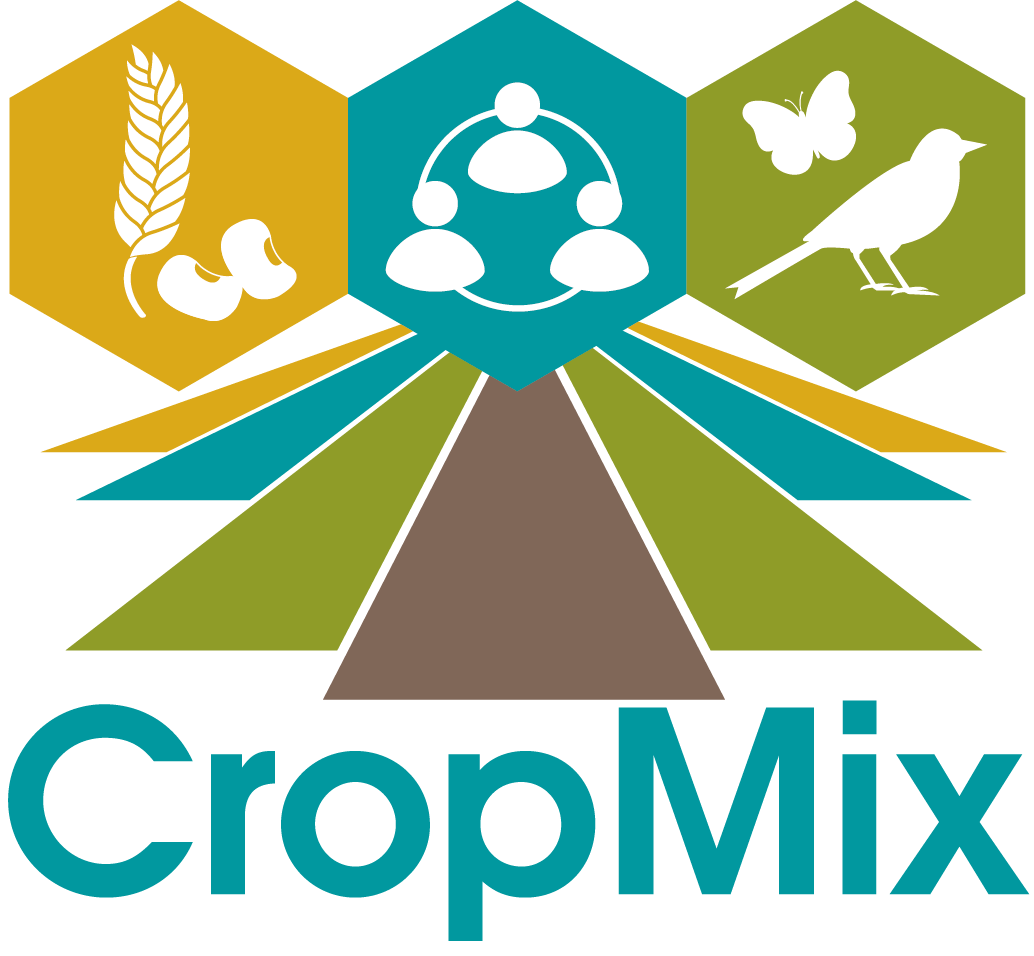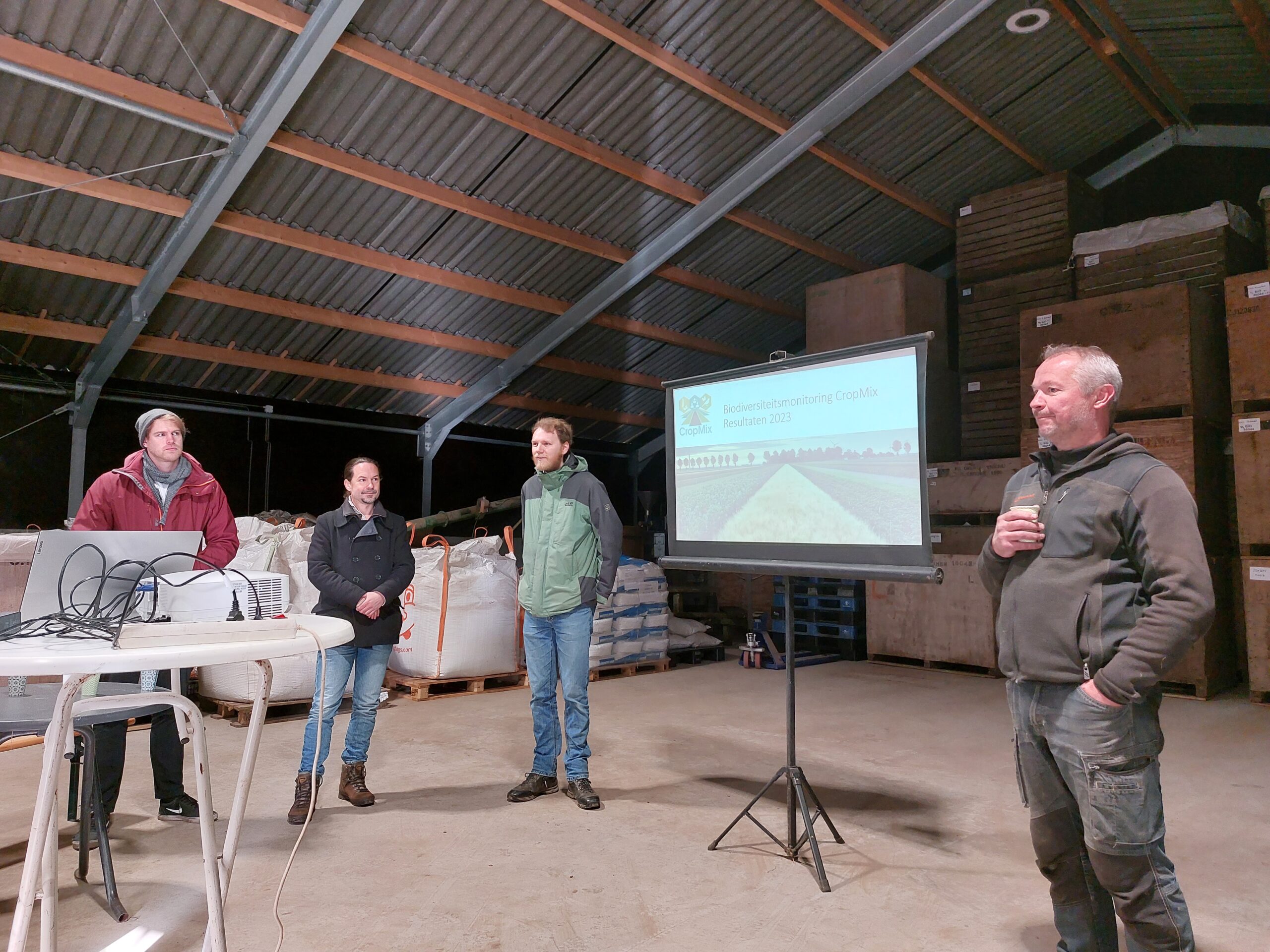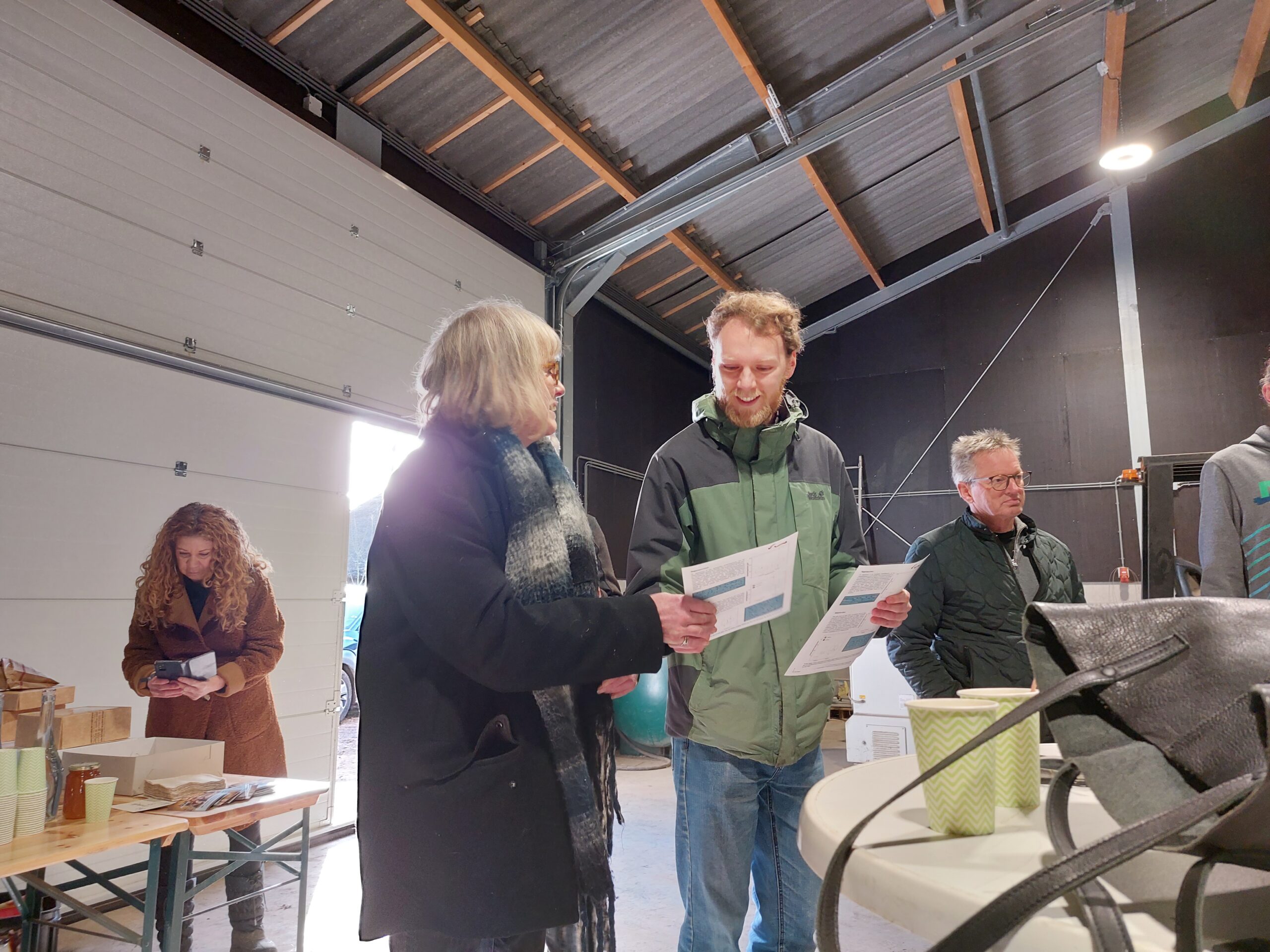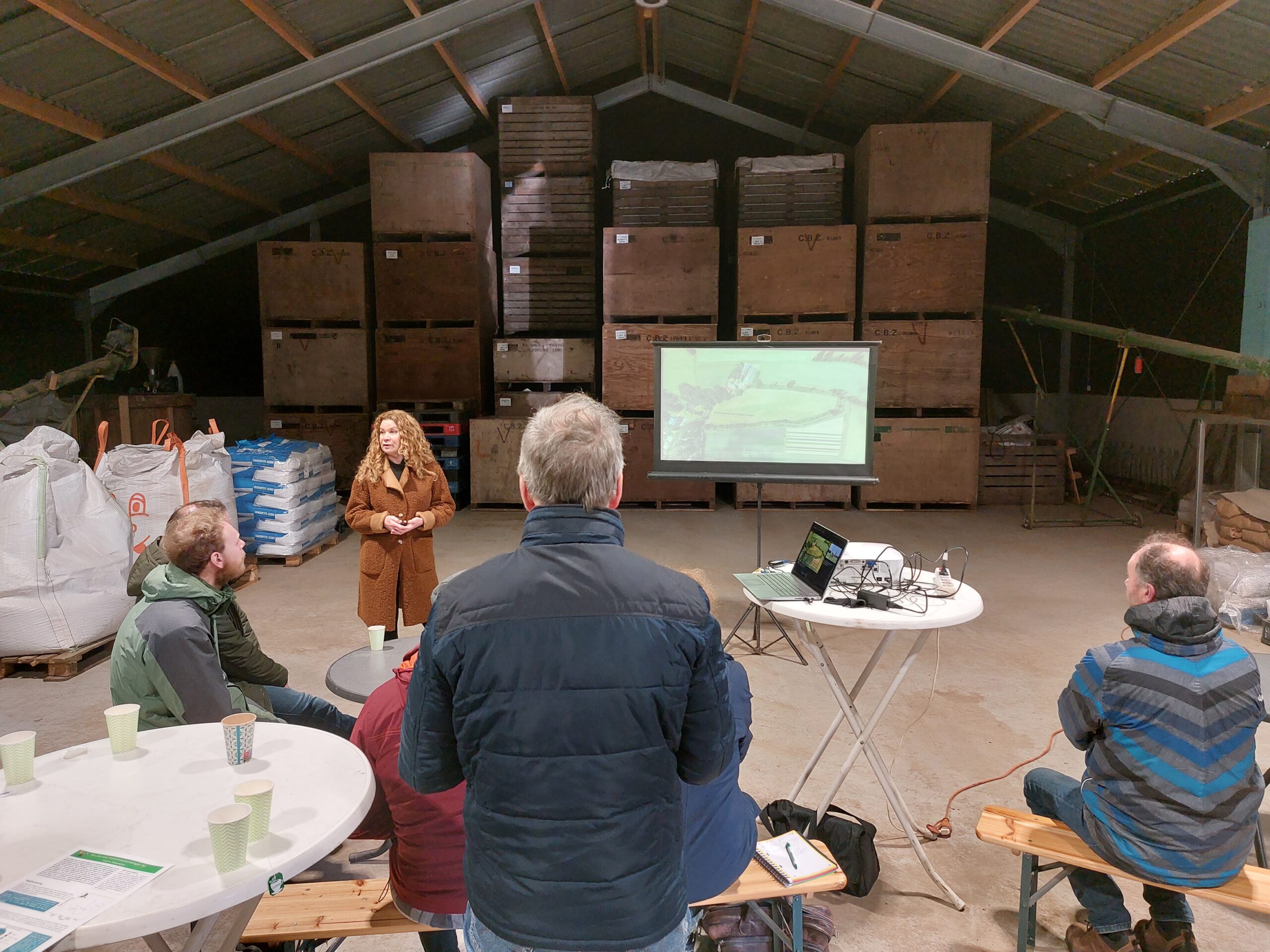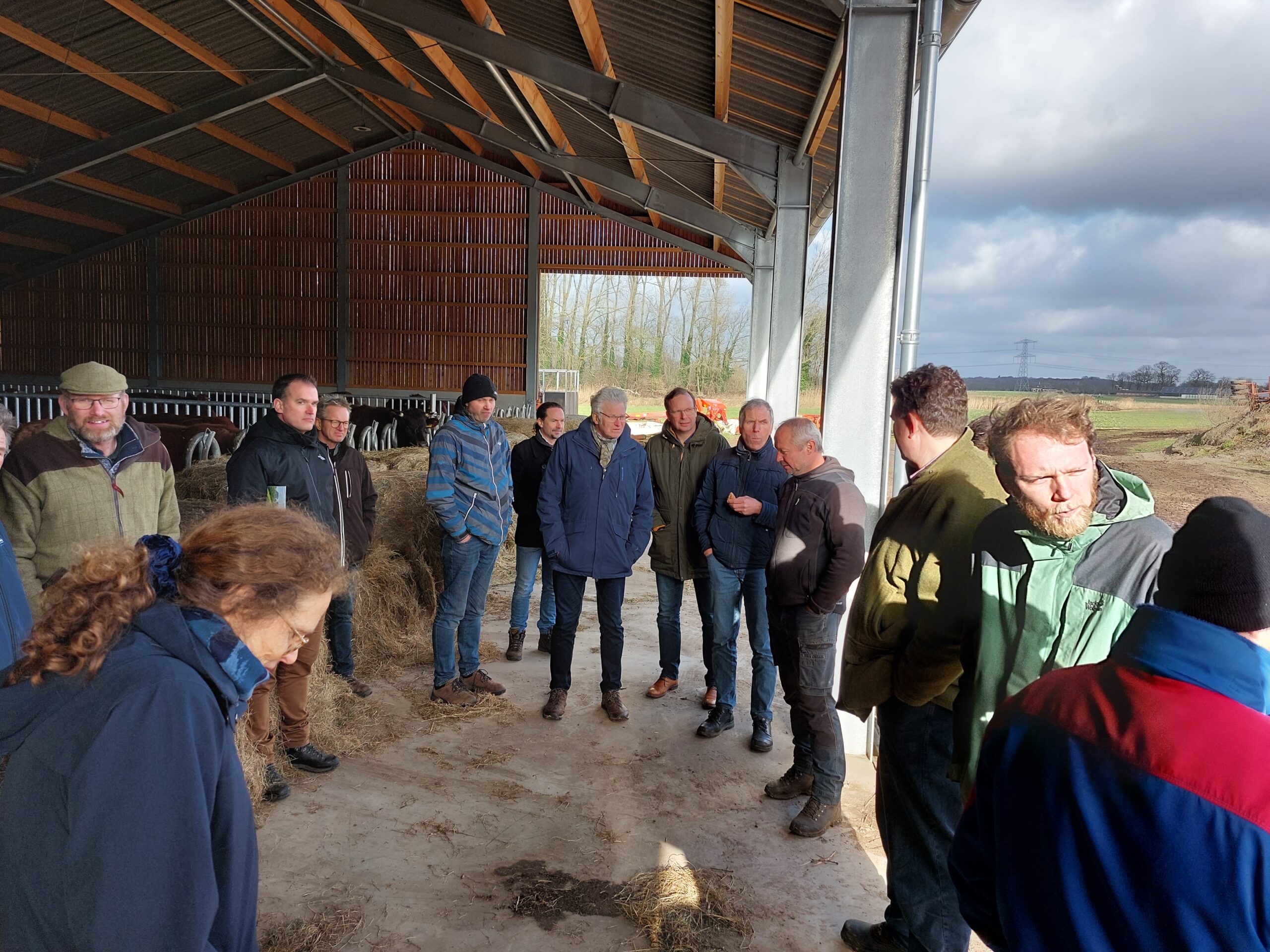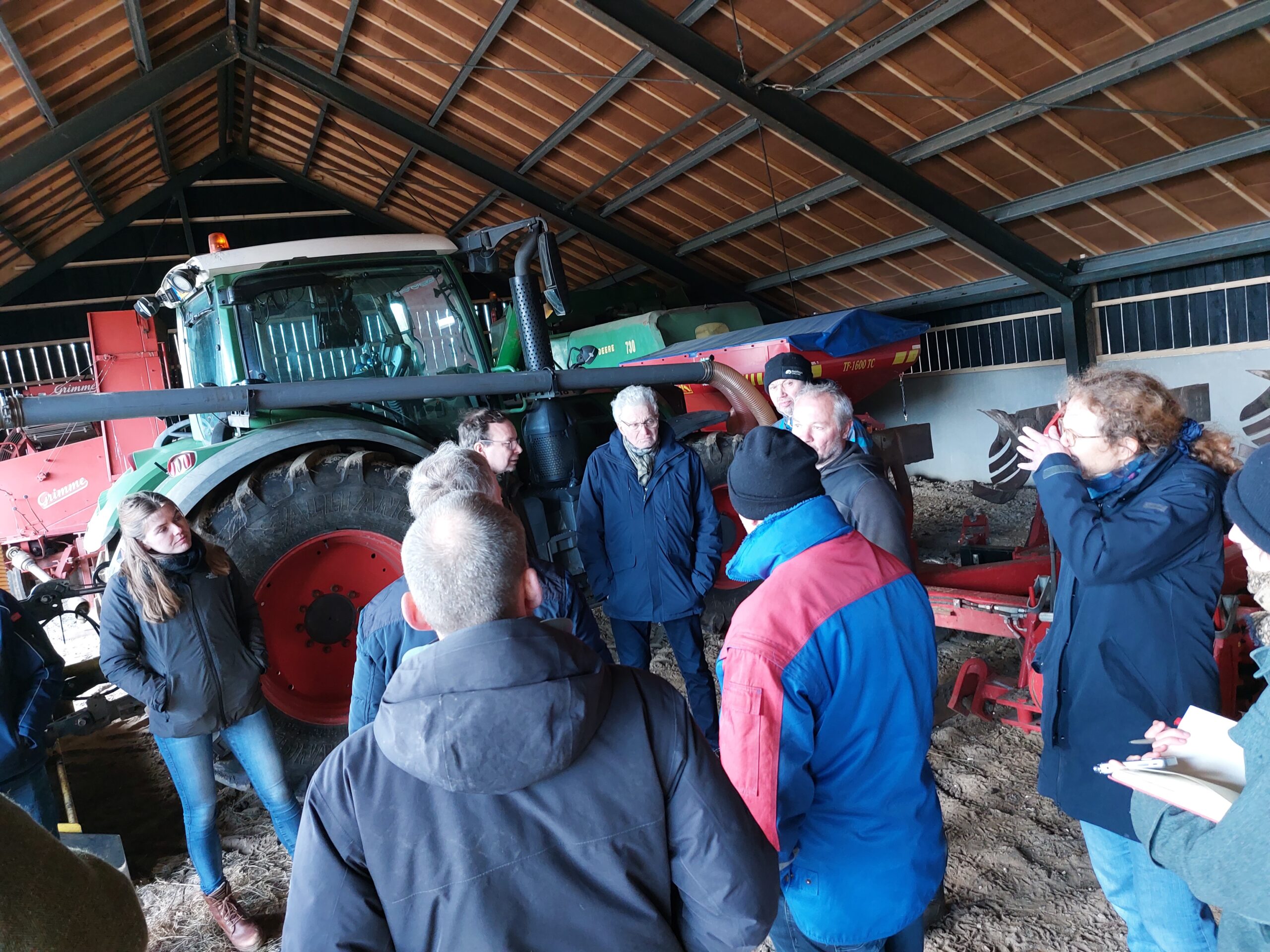Today, participating growers from CropMix were guests of Winny and Arjen van Buuren on Velhorst Estate. Together we reviewed the results of the first season of biodiversity measurements while cows, chickens and peacocks made happy sounds in the background.
After a welcome from Arjen and Winny, the field technicians presented their initial findings. All farmers were given a fact sheet with the individual results of their farm, compared to their reference field.
First results
Initial observations show a higher number of bird species using strip cultivation plots compared to monoculture plots, especially when looking over the whole year. The predation of our plasticine caterpillars (made of green clay), by birds, insects and also mammals, did not yet show a strong effect. However, a nice initial dataset has been established that offers potential to delve further into. For field herbs (weeds), we saw that, especially on conventional plots with strip cultivation, a greater diversity of field herbs was present than on conventional full-field plots. For organic plots, we did not see this effect of strip cropping.
In the coming months, field assistants will continue to identify crawling and flying insects. Soil scientists will also further analyse soil samples and look for nematodes and earthworms. So these results will follow.
Business model is savings model
After the initial results, it was Winny's turn to tell us more about their farm's revenue model. On their organic farm, they work with strip cropping to increase biodiversity. Healthy soil is central, but a healthy revenue model is also important. By selling locally in the short chain, directly to consumers or to bakers and restaurants, they can set their own prices. Their products are not cheap, but many people are still willing to pay the price. "They know our story and what value we add to the landscape and nature," says Winny. The crop is 80% cereals and they don't do mechanical weed control, which saves a lot of time and resources. "The revenue model is actually a savings model," explains Arjen.
Keep up the good work
After a delicious lunch provided by a local bakery, baked with grains from Winny and Arjen, we were given a short tour of the farm. We concluded by asking the farmers about their experiences over the past year. "Keep up the good work," was the message, "But don't wait and share results with us immediately, even if it is not yet fully scientifically analysed." To be continued!
